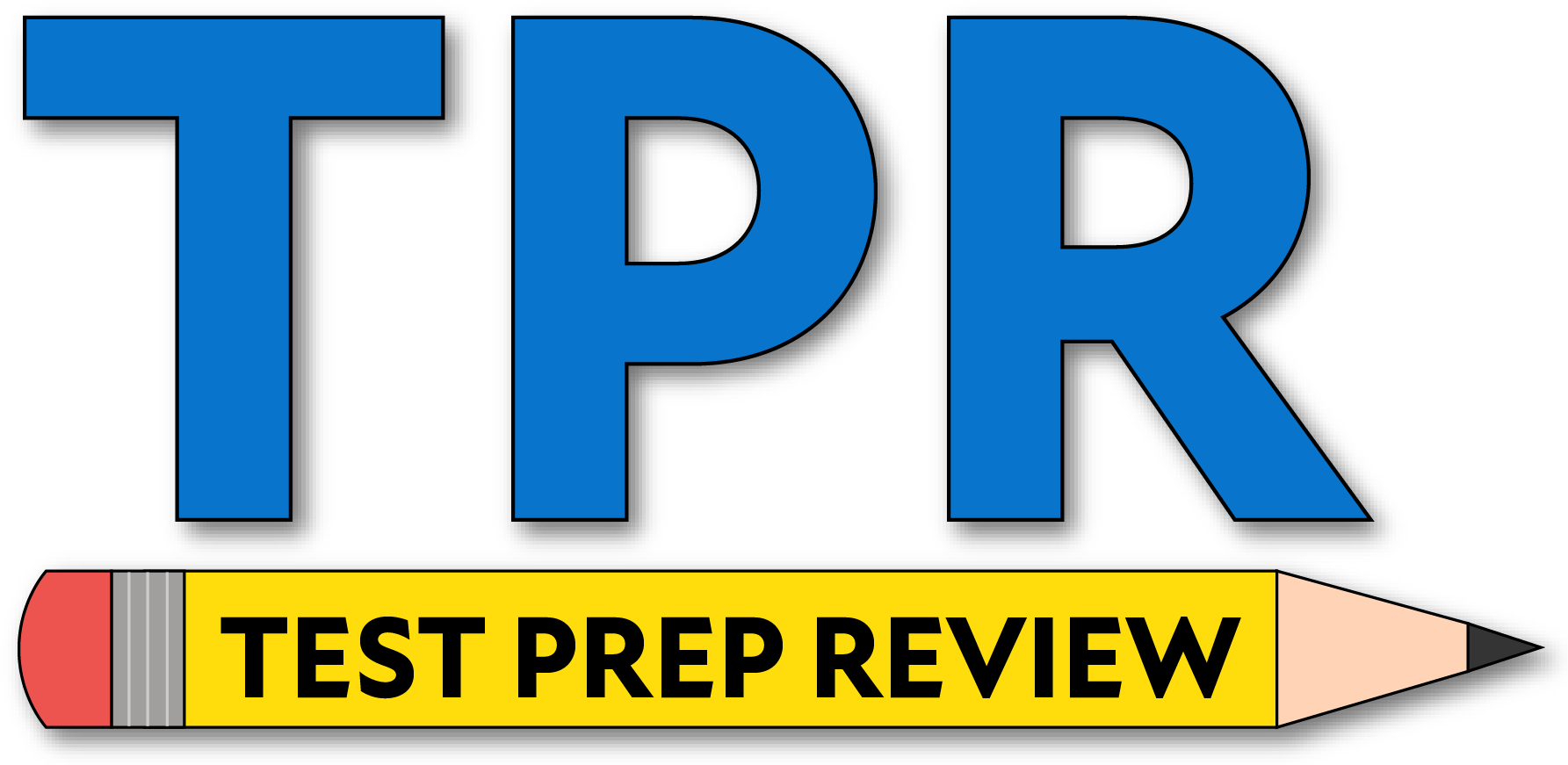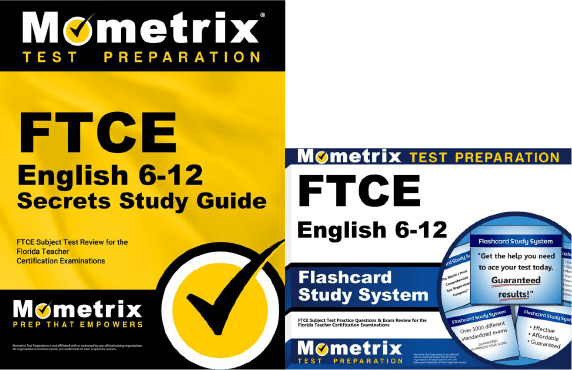If you need help studying for the FTCE English 6-12 test or just want some more information about what the test is like, you’ve come to the right place!
Click below to take a free FTCE English 6-12 practice test!
What’s on the Test?
The FTCE English 6-12 test contains 60 multiple-choice questions and one essay, and the time limit is 2.5 hours.
The exam is split into eight competencies:
1. Effective Use of The English Language at the Postsecondary Level
15% of the exam
- The development of the English language over time
- Standard English grammar, usage, and conventions
- Various sentence types
- Identifying word meanings and pronunciations
- Connotation vs. denotation
- Analyzing word structure and meanings via word parts, etymology, and roots and suffixes
- Interpreting figurative language
2. Communication Skills, Techniques, and Processes
18% of the exam
- Structures and purposes of various forms of writing
- Writing personal and fictional narratives
- Writing an argument with a logical organizational structure
- Writing an expository text that explains and analyzes information from multiple sources
- Improving writing by planning, revising, and editing
- Integrating diverse digital media in written texts
- Developing and refining research questions
3. Literacy Processes and Instructional Practices
15% of the exam
- Analyzing levels of text complexity and readability
- Promoting students’ ability to analyze imagery, semantic and syntactic structures, and diction in texts
- Enhancing students’ ability to determine the meaning of words in context
- Enhancing students’ ability to evaluate how text structure conveys purpose
- Determining students’ proficiency on the reading continuum
- Assessing fluency
- Enhancing the literacy process
4. Knowledge of a Wide Range of Literary and Informational Texts
17% of the exam
- Analyzing how key elements of literary texts add layers of meaning
- The development of universal themes in literary texts
- Comparing and contrasting archetypes in texts
- Understanding how informational text structures and features convey meaning
- Comparing and contrasting how related topics and themes are addressed by different authors
- Evaluating supporting ideas
- Analyzing an author’s reasoning and use of rhetoric
- Comparing multiple arguments on a topic
- Analyzing authors’ use of literary and rhetorical devices to create tone and mood
5. Effective Techniques for Listening, Viewing, Speaking, and Presenting
10% of the exam
- Collaborative techniques
- Active-listening skills
- Presenting information orally with coherent focus and logical organization
- Creating digital presentations that use coherent ideas and a clear perspective
- Using appropriate vocal qualities, nonverbal cues, and pacing
6. Pedagogical Content for Teaching English Language Arts
15% of the exam
- Developing students’ English language skills
- Guiding students in selecting and evaluating valid and reliable information from sources
- Enhancing students’ writing skills
- Providing meaningful feedback on student writing
- Enhancing students’ comprehension and analysis of texts
- Enhancing students’ listening, speaking, presenting, and viewing skills
7. Driving Instructional Decisions within English Language Arts
10% of the exam
- Effectively assessing students’ English language, writing, viewing, listening, speaking, and presenting skills
- Effectively assessing students’ comprehension and analysis of texts
- Determine students’ strengths and needs and adjust instruction accordingly
- Assessing reading performance
- Sharing assessment data with students and stakeholders
8. Evaluating a Student’s Written Analysis of a Literary Text
1 essay
- Evaluating a student’s ability to establish a clear and coherent claim
- Evaluating a student’s ability to support an establish claim by using logical reasoning and elaboration
- Evaluating a student’s understanding of the use of literary elements
- Evaluating a student’s use of logical organizations and purposeful transitions
How to Register
To get started with the registration process, you’ll need to create an FTCE/FELE account on their website. You can then register for the exam via your account.
The exam is split into two parts: the multiple-choice questions and the essay.
How the Exam is Scored
The multiple-choice section of the FTCE English 6-12 test is scored using a scaled scoring method. Here’s how it works:
For every question you answer correctly, you get one point added to your raw score. At the end of the test, your final raw score will be converted to a scaled score.
The reason your raw score is converted to a scaled score is because everyone that takes the test is given a slightly different set of questions. Since everyone has a different arrangement of questions, and because some questions are harder than others, converting your raw score to a scaled score ensures a more even playing field.
FAQs
How many questions are on the FTCE English 6-12 exam?
The exam contains 60 questions and one essay.
What is the time limit for the FTCE English 6-12 exam?
The full exam is timed at 2.5 hours.
What is the passing score for the FTCE English 6-12 exam?
You’ll need to get a final scaled score of at least 200 on the multiple-choice section and at least 5 points on the essay to pass the exam.
How much does the FTCE English 6-12 exam cost?
The testing fee for each part is $75.
Mometrix Test Preparation is not affiliated with or endorsed by any official testing organization. All organizational and test names are trademarks of their respective owners.



 FTCE Study Guide
FTCE Study Guide FTCE Flashcards
FTCE Flashcards